Every year I try to make something really special with the first spring violets. For the last few years I have attempted to make a violet curd but it always failed, losing its amethyst color and turning gray when I heated it. And since there are a limited number of violets in my yard/neighborhood, I really only get one shot at it a year!
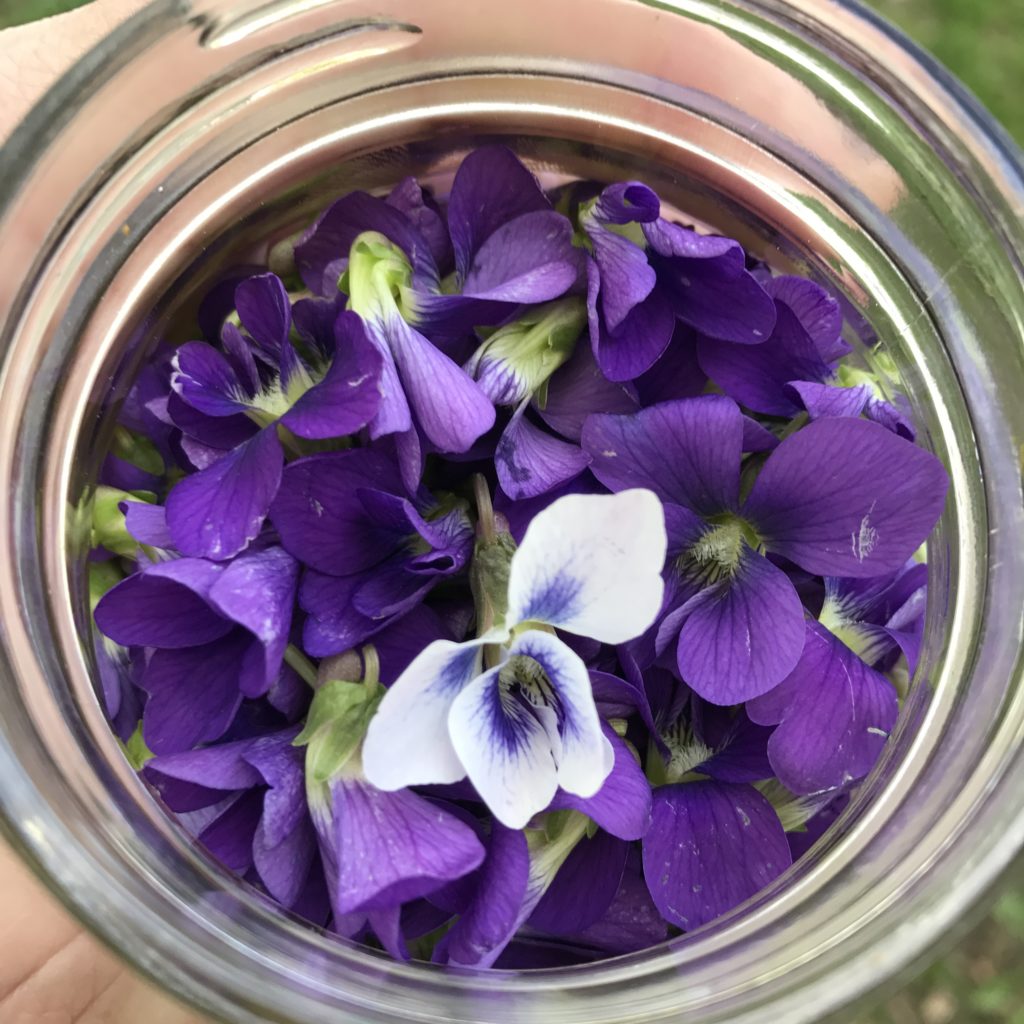
This Is My Year for Violet Lemon Curd
Anyone who loves to make violet jelly, violet lemonade, etc. knows that the magic happens when you add the lemon juice, at that moment the acidity transforms the violets natural sapphire color the most gorgeous shade of purple. So my plan has always been to make a lemon curd and then use the violet tincture to add the color.

The Challenge
There are a few problems with getting great color in a violet curd. The first is that traditional lemon curd calls for egg yolks. The yolks are what give lemon curd their beautiful color, not the lemon juice/zest. Unfortunately, purple and yellow are on opposite sides of the color wheel and when you combine them you get gray. Boo. The second big issue is that even when you add the lemon juice, it sometimes turns gray when heat is applied, a necessary part of thickening and tempering a curd.
The third big issue is that the violet color is in a liquid form, the “violet tea”. And you can’t just go around adding more liquid to a recipe like lemon curd without wrecking it. I know some who add extra color, but since the American violets themselves don’t have much flavor, getting the color only from the violets is sort of the whole point in my opinion. So food dye, pea flower powder, etc. are out.
The third big issue is that the violet color is in a liquid form, the “violet tea”. And you can’t just go around adding more liquid to a recipe like lemon curd without wrecking it. I know some who add extra color, but since the American violets themselves don’t have much flavor, getting the color only from the violets is sort of the whole point in my opinion. So food dye, pea flower powder, etc. are out.

The Fix
The easiest problem to solve was the egg yolks. There are plenty of eggless and vegan lemon curd recipes out there. So I started with a basic eggless lemon curd recipe that uses cornstarch as the thickener. It’s basically a very tart lemon pudding finished with some butter. Yum! The liquids in the recipe are milk and lemon juice. I tried a quick experiment where I subbed out the milk for water (which would be my violet tea) and powdered milk but it tasted icky. That left the lemon juice. Who in their right mind would omit the lemon juice from a lemon curd recipe? Well, it turns out I’m that lunatic.
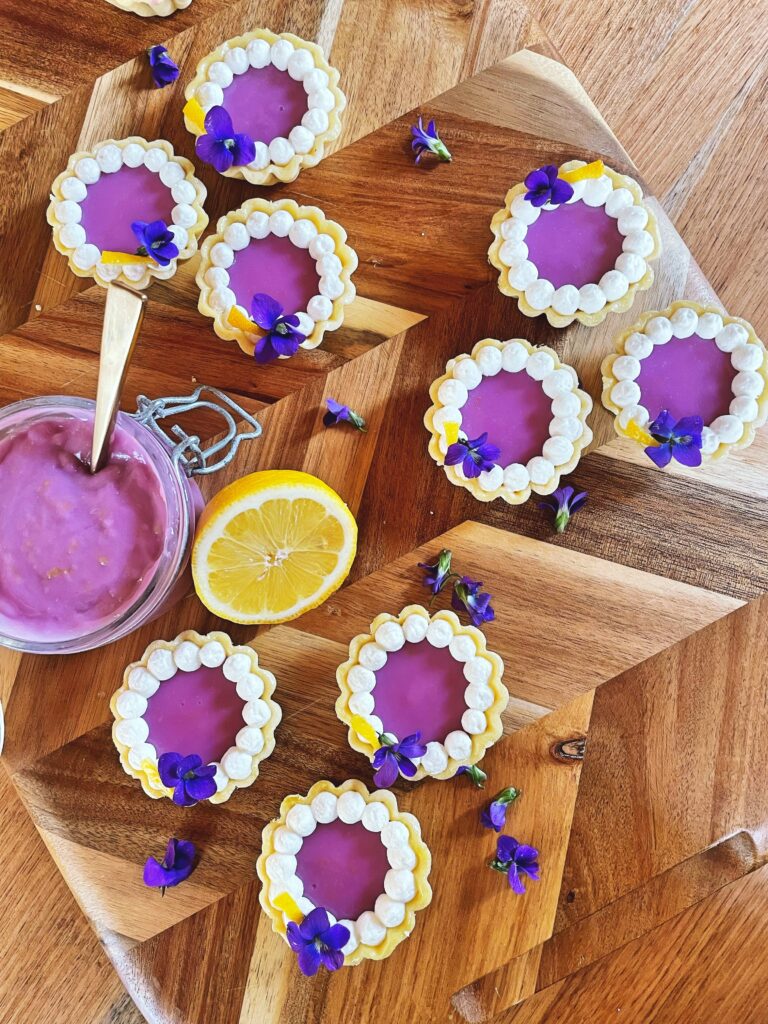
I decided to go into my jams and jelly supplies and use some citric acid powder. Not only would it give the recipe the needed tartness, but would help preserve the color. Because the recipe has plenty of lemon zest, you still get that yummy lemon flavor. I started with one teaspoon but found after cooking, that the color had diminished quite a bit so I added another teaspoon at the end with the butter and it brightened right up!
There’s Science Behind Violet Curd’s Beautiful Color:
The most magical thing about this violet curd is the color. It glows with an amethyst purple that is almost prettier than the flower itself. And it makes a nice science demonstration.
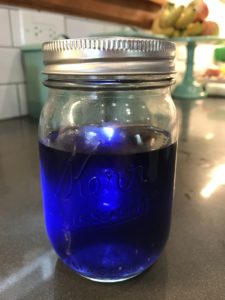
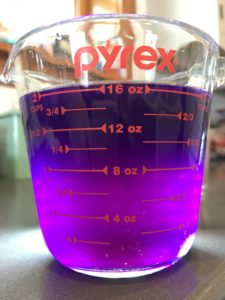
When you pour the boiling water over the petals, the liquid turns a dark sapphire blue. The first time I made it I thought I had done something wrong. But when you add the citric acid, it reacts to the cyan-compounds and lowers the pH, turning it right back to purple! It’s pretty neat. The flavor is very mild. It’s mostly just sweet. I always add a bit of rose water to give it a more floral note but that’s optional!
Some Tips for Perfect Violet Curd Every Time
- Try to gather on a dry day. Muddy flowers mean muddy violet tea. Ew.
- Which leads me to my next tip, which is to gather flowers in an area you feel confident is not loaded with pesticides and dog pee.
- Make your violet tea as soon as you can after picking, while the petals are still a nice and fresh. A few hours is fine.
- Make sure to get as many flowers into your pint jar as you can. Press them down gently to fit them all in. The more flowers, the deeper the color.
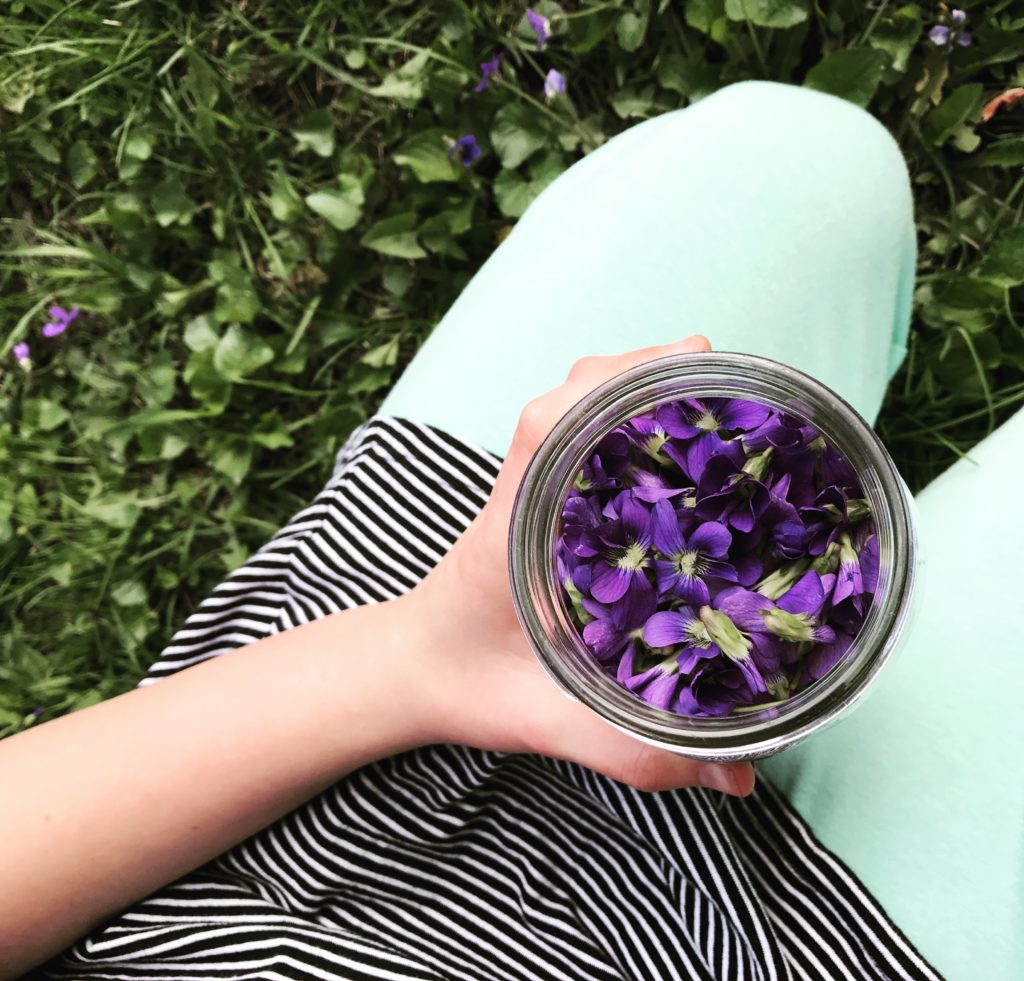
So there you go! Hope you enjoy this recipe. I piped mine into some little tart shells using Tartine’s pate sucree recipe, but you can use this anywhere you would typically use lemon curd. I think my next batch will be used to make a lovely layered tart with candied lemons and white chocolate ganache.
More Wild Edible Plants Recipes From Bakers Brigade:
- Dandelion Jelly
- Violet Jelly
- Caramelized Spruce Syrup
- Pawpaw Ice Cream
- Dandelion Lemon Bars
- Violet Lemonade
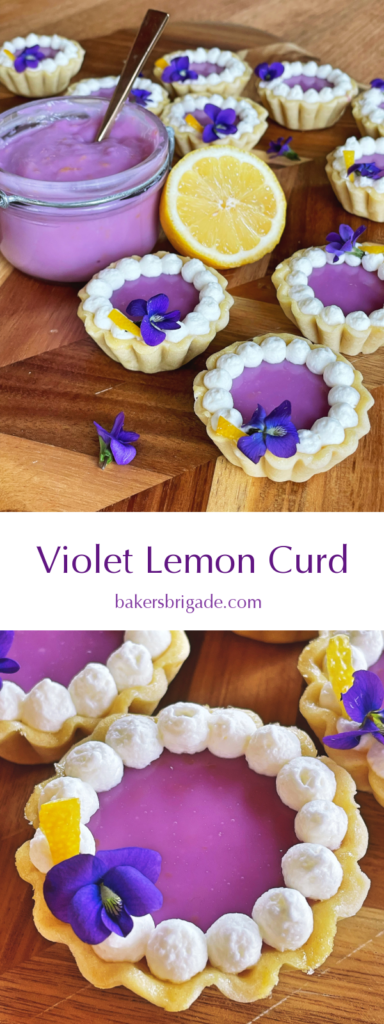
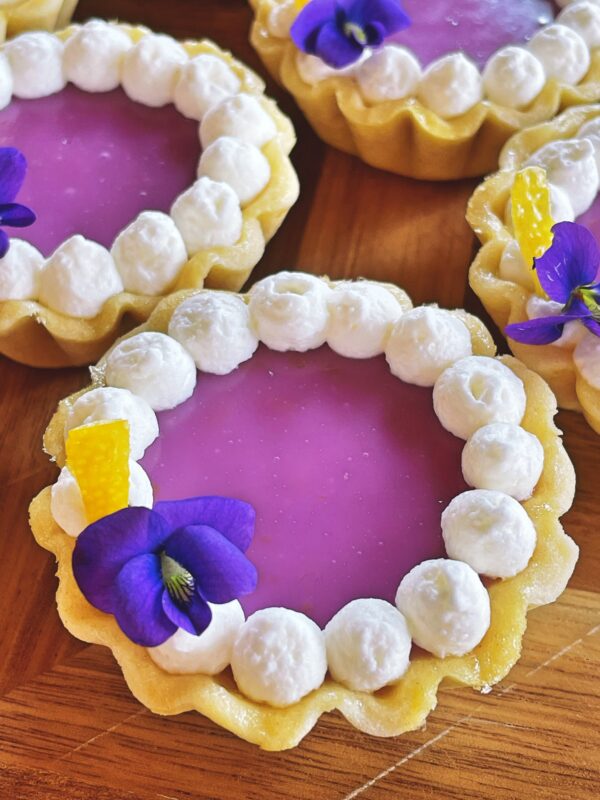
| Cook Time | 15 minutes |
| Passive Time | 24 hours |
| Servings |
cups
|
- 1/2 cup granulated sugar
- 2 tablespoons corn starch
- 1/4 teaspoon salt
- 3/4 cup Whole milk
- 3/4 cup violet tea
- lemon zest from 2 lemons
- 2 teaspoons citric acid powder divided
- 2 tablespoons unsalted butter
- 1/4 teaspoon rosewater or to taste
- 1 cup violet flowers gently packed
- boiling water to fill jar
Ingredients
For the Violet Curd:
For the Violet Tea:
|

|
- Pour boiling water into your jar of violets until it is full, making sure to gently press on the violets to release any air bubbles. Cover your jar and keep it out of bright sunlight for about 24 hours. The color of the violet tea will look sapphire blue, not purple.
- Line a colander with a paper towel or coffee filter and strain the violet tea, squeezing the solids to extract as much color as possible. If necessary, add enough water to your tea so that the mixture equals 3/4 cup.
- Combine the sugar, cornstarch, and salt in a medium saucepan.
- Add 1 teaspoon of citric acid to the violet tea, it should turn purple. Then add the milk, tea, and lemon zest to the pan and stir.
- On medium-low heat, whisk constantly until the mixture bubbles and thickens, about 5 minutes. If the curd doesn't thicken after about 5 minutes, turn up the heat a bit. It will not thicken until it is bubbling and should coat the back of a spoon when ready. The color of the curd may fade as it heats.
- Remove from heat, then add the butter, stirring until melted. Next add the remaining teaspoon of citric acid until the desired color is reached. I used all of mine. Finally, stir in the rosewater.
- If using in tarts, fill shells right away. If not, this will store in the fridge, with plastic wrap pressed to the top to prevent a skin from forming for 1-2 weeks. The curd will thicken and set as it cools.
- If your curd is over thickened or sets up too firm, you can smooth it out with an immersion blender or just give it an enthusiastic stirring.
